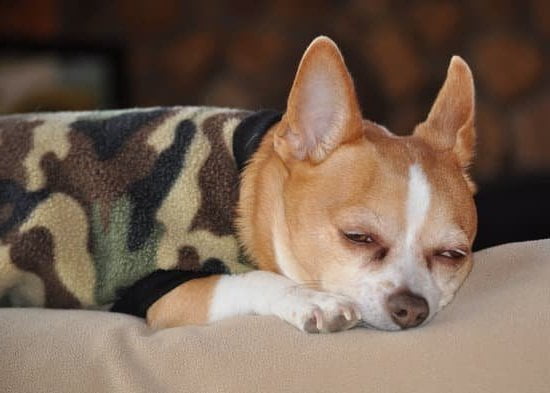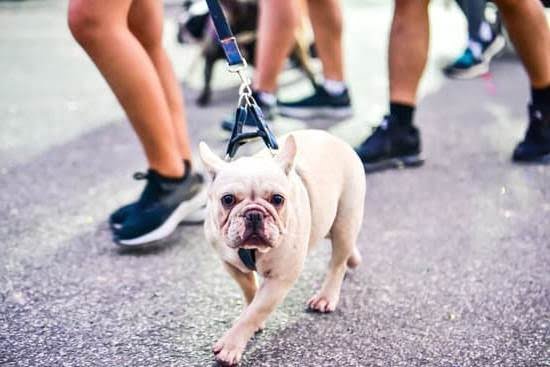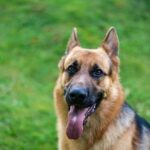Training a dog to be around gun shooting can be essential for owners who are hunters, sports shooters, or live in areas where firearms are commonly used. Dogs have sensitive hearing and loud noises like gunfire can easily startle or frighten them. Ensuring your canine companion is comfortable and calm around gunshots not only enhances their safety but also makes the experience more enjoyable for both of you.
The process of training a dog to be around gun shooting requires patience, dedication, and a thoughtful approach. Safety should always be the top priority, with a focus on creating a controlled and positive training environment. By following proven techniques and strategies, you can help your dog gradually acclimate to the sound of gunfire and build their confidence in noisy situations.
In this article, we will explore how to prepare your dog mentally and physically for gun shots, use positive reinforcement to associate gunfire with positive experiences, introduce gradual exposure to loud noises, desensitize your dog to fear, teach them to remain calm in challenging situations, practice real-life scenarios such as hunting or shooting situations, and highlight common mistakes to avoid during the training process.
By understanding the importance of training your dog in this context, you can enhance your bond with them while ensuring their well-being in potentially loud environments.
Safety First
Training your dog to be comfortable around gun shooting can be a rewarding experience for both you and your furry companion. However, safety should always be the top priority when engaging in this type of training. Before starting any training sessions involving gunshot sounds, it is crucial to ensure a safe environment for your dog.
One important safety tip is to start the training in a controlled setting, such as a secure backyard or a quiet area away from distractions. This will help minimize any potential risks and allow you to focus on the training process without external disturbances. It is also advisable to use hearing protection for yourself and anyone else involved in the training to prevent any damage to their ears.
Additionally, make sure that your dog is physically and mentally prepared for the training sessions. This means ensuring that your dog is in good health and not experiencing any stress or anxiety before starting the training. A healthy and relaxed dog will be more receptive to learning how to be around gunshots in a calm manner. By prioritizing safety at all times during the training process, you can create a positive and effective learning environment for your dog.
Overall, by following these tips and prioritizing safety throughout the training sessions, you can help your dog overcome any fears or anxiety related to gun shooting sounds successfully. Remember that patience, consistency, and positive reinforcement are key elements in teaching your dog how to stay calm and focused around loud noises like gunshots.
With dedication and proper safety measures in place, you can strengthen the bond with your canine companion while preparing them for various real-life scenarios involving gunshot sounds.
Getting Started
When embarking on the journey of training your dog to be around gun shooting, it is essential to start by preparing your furry companion mentally and physically for the loud noises associated with firearms. Dogs, like humans, can experience fear and anxiety when exposed to sudden and unfamiliar sounds, so it is crucial to take the necessary steps to ensure their comfort and safety throughout the training process.
Understanding Your Dog’s Behavior
Before introducing your dog to gunshot sounds, it is important to understand how they may react. Some dogs may exhibit signs of fear or stress, such as trembling, panting, or trying to escape when exposed to loud noises. By observing your dog’s behavior in different situations, you can better tailor your training approach to address their individual needs and anxieties.
Creating a Safe Space
To help your dog feel more comfortable during the training process, it is important to create a safe and secure environment where they can relax and feel at ease. This can include setting up a quiet room or designated area in your home where your dog can retreat if they become overwhelmed by the sounds of gunfire.
Additionally, ensuring that your dog has access to familiar objects such as their bed, toys, or blankets can provide them with a sense of security and comfort.
Physical Preparation
In addition to mental preparation, physical conditioning plays a key role in helping your dog adapt to gun shooting sounds. Regular exercise and outdoor activities can help improve your dog’s overall fitness level and stamina, making them better equipped to handle the physical demands of gun training sessions.
Engaging in activities such as obedience training, agility exercises, or scent work can also help strengthen the bond between you and your furry companion while building their confidence and trust in you as their handler. Remember – a tired but happy pup is more likely to remain calm and focused during training sessions involving gunshot sounds.
Positive Reinforcement
Choosing the Right Rewards
When using positive reinforcement to train your dog to be around gun shooting, it’s important to choose rewards that are high-value and motivating for your pet. Some dogs may be more food-motivated, while others may respond better to play or affection. Experiment with different types of rewards to see what works best for your individual dog.
Timing Is Key
One crucial aspect of using positive reinforcement effectively is timing. It’s essential to give the reward immediately after the gunshot sound occurs, so your dog can make a direct connection between the noise and the positive experience. This helps reinforce the idea that gunfire is nothing to be afraid of and can even lead to excitement or anticipation of rewards in the future.
Using positive reinforcement in training your dog to be around gun shooting not only helps create a sense of safety and confidence in your pet but also strengthens the bond between you and your furry companion. Remember to be patient, consistent, and always end each training session on a positive note. With time and effort, you can successfully teach your dog how to remain calm and focused in environments where gunshots are present.
Gradual Exposure
Training a dog to be around gun shooting requires patience, consistency, and a systematic approach. Gradual exposure is key in helping your canine companion become accustomed to loud gunshot sounds without feeling fearful or anxious. Here are some steps to follow when introducing your dog to gun shooting:
- Start with low-intensity sounds: Begin by playing recordings of gunshot noises at a low volume to gauge your dog’s reaction. If your dog shows signs of distress, such as trembling or barking, reassure them and gradually increase the volume over time.
- Associate gunfire with positive experiences: Create a positive association with gunshot sounds by pairing them with rewards or treats. For example, play the sound of a gunshot followed immediately by giving your dog their favorite treat. This will help your dog understand that loud noises can result in good things.
- Practice in different environments: Once your dog becomes more comfortable with low-intensity sounds indoors, gradually introduce them to gun shooting in different settings. Start in a quiet outdoor area and slowly work up to more noisy environments such as a shooting range or hunting grounds.
Remember that every dog is unique and may progress at their own pace when it comes to getting used to gun shooting. It’s essential to pay attention to your dog’s body language and adjust the training accordingly. With patience and positive reinforcement, you can help your furry friend feel confident and calm around gunfire.
Techniques for Desensitization
Dogs are sensitive to loud noises, and gunshots can be particularly startling for them. Desensitization is a key component in training your dog to be comfortable around gun shooting. By gradually exposing your furry friend to gunshot sounds and helping them overcome their fear, you can ensure that they remain calm and composed in such situations.
To help desensitize your dog to gunshots, here are some effective strategies you can use:
- Start with low-volume recordings: Begin by playing recordings of gunshot sounds at a very low volume while engaging in activities that your dog enjoys. This will help them associate the sound with positive experiences.
- Gradually increase the volume: Over time, slowly increase the volume of the gunshot sounds as your dog becomes more comfortable. Pairing the sound with treats or playtime can reinforce positive associations.
- Create a safe space: Provide a secure and familiar environment for your dog during desensitization sessions. This can be their favorite room or corner where they feel most relaxed.
It’s important to remember that each dog is unique, so progress may vary depending on their temperament and past experiences. Patience and consistency are key when implementing desensitization techniques. With time and effort, you can help your beloved canine companion conquer their fear of loud noises like gunshots and become more confident in challenging situations.
Advanced Training
Training your dog to stay calm and focused in the midst of gunshot sounds is a crucial skill, especially if you are an avid hunter or participate in shooting sports. This advanced training goes beyond simple desensitization and requires a combination of trust, obedience, and mental fortitude from both you and your furry companion.
By following the right techniques and remaining patient throughout the process, you can help your dog become more confident and reliable in challenging situations involving loud noises.
These commands will serve as the building blocks for more complex training exercises and will help establish a clear line of communication between you and your dog. Consistent practice and reinforcement of these commands will instill discipline and focus in your dog, making it easier for them to remain calm when faced with unexpected loud noises.
In addition to basic obedience, incorporating simulated hunting scenarios into your training routine can further enhance your dog’s ability to stay calm around gunshot sounds. Set up dummy retrieves or use decoys to mimic hunting situations, gradually introducing gunshot sounds during these exercises.
By creating realistic scenarios that mimic actual hunting conditions, you can prepare your dog mentally and physically for the sights and sounds they may encounter in the field. Remember to always prioritize safety during these training sessions by using hearing protection for yourself and ensuring a controlled environment for your dog’s practice.
| Concept | Details |
|---|---|
| Basic Obedience Commands | Master commands like sit, stay, come, heel before gun sound exposure. |
| Simulated Hunting Scenarios | Use decoys & dummy retrieves to train dogs safely around gunshots. |
Real-Life Scenarios
Training your dog to be around gun shooting is not just about getting them familiar with the sound of gunfire, but also preparing them for real-life scenarios such as hunting or shooting situations. This advanced level of training requires a solid foundation in desensitization and obedience, ensuring that your dog remains calm, focused, and responsive even in the midst of loud noises and high-stress environments.
One important aspect of training for hunting or shooting situations is to simulate realistic scenarios during practice sessions. This could include setting up a mock hunting expedition or incorporating simulated gunshots into regular training routines. By exposing your dog to these lifelike situations in a controlled environment, you can help them get comfortable with the sounds and sights they will encounter during actual hunts or shooting activities.
Additionally, it’s crucial to reinforce positive behavior and obedience during these real-life scenarios. Rewarding your dog for staying calm, following commands, and maintaining focus amidst distractions like gunshots will help them associate these experiences with positive outcomes. Through consistent training, patience, and effective communication, you can build a strong bond with your dog while preparing them for success in hunting or shooting situations.
| Real-Life Scenarios Training | Key Points |
|---|---|
| Simulation of Hunting Expeditions | Prepare dogs for realistic scenarios |
| Rewarding Positive Behavior | Associate gunshots with positive experiences |
| Consistent Training and Communication | Build a strong bond with your dog |
Common Mistakes to Avoid
Training your dog to be around gun shooting can be a crucial skill, especially if you enjoy activities like hunting or shooting sports. However, there are common mistakes that owners should avoid during the training process to ensure the safety and well-being of their furry companions.
One common mistake to avoid is pushing your dog too quickly into exposure to gunshots. It’s essential to remember that each dog has its own pace when it comes to desensitization to loud noises. Rushing the process can lead to fear and anxiety in your pet, making it more challenging to reach the desired outcome. Instead, take your time and gradually introduce your dog to gunshot sounds in a controlled environment.
Another mistake is failing to provide positive reinforcement during training sessions. Dogs respond well to rewards and praise, so it’s crucial to associate gunshots with positive experiences for your pet. Whether it’s treats, toys, or verbal cues, make sure to reward your dog every time they exhibit calm and relaxed behavior around loud noises. This will help strengthen the connection between gunshots and positive outcomes for your furry friend.
Additionally, avoid using punishment or harsh methods when training your dog to be around gun shooting. Punitive techniques can create fear and mistrust in your pet, hindering the training progress instead of helping them overcome their fear of loud noises. Keep the training sessions positive, consistent, and patient for the best results in helping your dog feel comfortable and secure in noisy environments.
Conclusion
Training a dog to be around gun shooting is a crucial skill for any hunting or shooting enthusiast who wants their furry companion to accompany them in the field. By following the right techniques and strategies, you can ensure that your dog remains calm, focused, and unafraid in the face of loud gunshot sounds.
Safety should always be a top priority when training your dog in this aspect, as creating a safe environment is essential for effective learning and positive outcomes. Remember that patience, consistency, and positive reinforcement are key to successfully acclimating your dog to gun noises.
One of the fundamental aspects of training your dog to be around gun shooting is gradual exposure. Start by introducing softer sounds and gradually work your way up to louder gunshots. This incremental approach helps prevent overwhelming your dog and allows them to adjust at their own pace. Additionally, techniques for desensitization can help your dog overcome any fear or anxiety associated with loud noises, ultimately leading to a more confident and composed companion in hunting or shooting scenarios.
In conclusion, training your dog to be around gun shooting not only benefits you as a handler but also enhances the bond between you and your canine companion. With dedication, patience, and the right approach, you can successfully teach your dog how to stay calm and focused amidst gunshot sounds. By avoiding common mistakes and consistently practicing in real-life situations, you can enjoy the rewards of having a well-trained hunting or shooting partner by your side.

Welcome to the blog! I am a professional dog trainer and have been working with dogs for many years. In this blog, I will be discussing various topics related to dog training, including tips, tricks, and advice. I hope you find this information helpful and informative. Thanks for reading!





